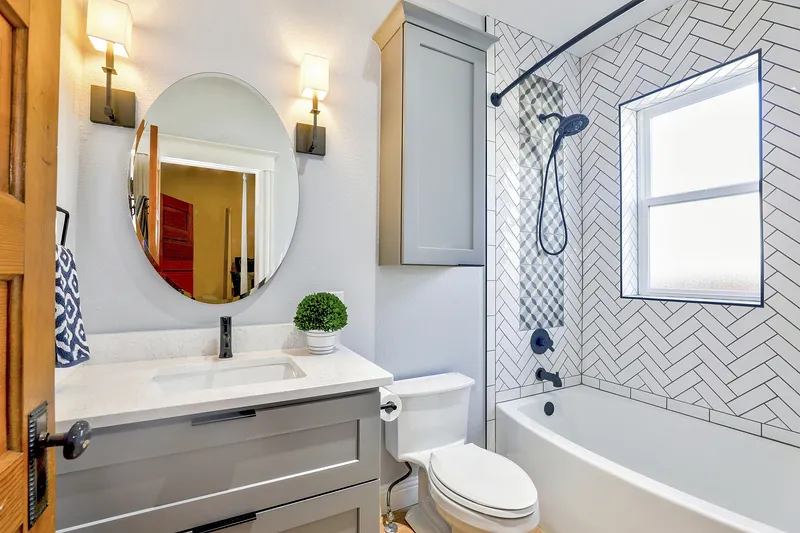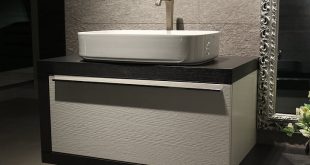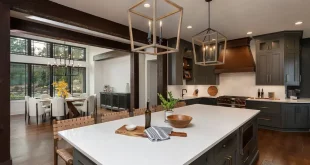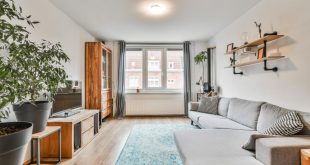The bathroom is one of the most important rooms in any home. It is a space where you can relax, unwind, and rejuvenate after a long day at work. However, many people tend to overlook the importance of bathroom design and often neglect to update or redesign their bathrooms for years.
Redesigning your bathroom is not only about aesthetics, but it can also increase the functionality and value of your home. An updated bathroom can enhance the quality of your daily routine and provide a sense of comfort and luxury. It can also add value to your home if you decide to sell it in the future.
This article will guide you through the process of redesigning your bathroom, from assessing your current space to planning, installation, and finishing touches. By following these steps, you can transform your bathroom into a space that not only meets your needs but also reflects your personal style and taste.
Assessment Space, Wants, and Needs
The first step in redesigning your bathroom is to assess the current space and determine your needs and wants for the redesign. Here are some important considerations:
Functionality
Consider how you use your bathroom. Do you need more storage space? Does your family need more than one sink? Do you require a bathtub or a shower stall? Think about what you need to make your bathroom more functional for your daily routine.
Style
Determine your preferred style for the bathroom. Do you want a modern or traditional look? What colors and textures do you prefer? Do you want a cohesive design with other areas of your home or something unique to the bathroom space?
Budget
Determine your budget for the project. Consider the cost of fixtures, materials, and any professional services you may need. Prioritize areas of the bathroom that need the most attention and plan your budget accordingly.
Space limitations
Assess the size and layout of your bathroom. Consider any structural limitations such as windows or doorways that may affect the redesign. Determine if you need to make any structural changes to maximize the space.
Planning
After assessing your bathroom and determining your needs and wants, the next step is to plan the redesign. Here are some important considerations:
Design plan
Create a design plan that incorporates your desired style, functionality, and budget. Consider the layout of the space and where you want to place fixtures such as the sink, toilet, and shower/bath. Research different styles, colors, and textures to create a cohesive design.
Color scheme and materials
Choose a color scheme that reflects your style and creates a cohesive look in the bathroom. Consider the materials for flooring, countertops, and walls. Choose materials that are durable, water-resistant, and easy to clean.
Layout and floor plan
Plan the layout of the space to maximize functionality and flow. Consider the placement of fixtures and the flow of traffic. Create a floor plan that works for your family’s needs.
Contractor or DIY
Decide if you want to hire a professional contractor or if you want to do the work yourself. Research contractors or find resources for DIY projects. Consider the complexity of the project and your skill level before making a decision.
By planning your redesign in advance, you can avoid any surprises during the remodeling process and ensure that the final product meets your needs and desires. Additionally, planning can help you stay within your budget and timeline for the project.
Plumbing and Electrical
Plumbing and electrical work are critical components of any bathroom redesign. Here are some important considerations:
Plumbing
If you plan to move or replace fixtures, such as a shower or a towel rail, you will likely need to make changes to the plumbing system. Hire a licensed plumber to handle any major plumbing work. A professional plumber can ensure that the plumbing is installed correctly and up to code, which can prevent future problems and water damage.
Electrical
Bathroom lighting and electrical outlets are also essential components of the redesign. Ensure that all electrical work is done by a licensed electrician. Bathrooms require specialized electrical components that are designed for use in wet and humid conditions. A licensed electrician can install the necessary components safely and efficiently.
DIY option
If you have experience with plumbing or electrical work, you may be able to handle some aspects of the project yourself. However, be sure to research local building codes and safety requirements before attempting any DIY work.
Finishing Touches
The finishing touches of a bathroom redesign can make a significant impact on the final product. Here are some important considerations:
Accessories
Choose accessories that complement the style and color scheme of the bathroom. Towels, shower curtains, and rugs are essential accessories that can add color and texture to the space. Additionally, consider installing storage solutions such as shelves or cabinets to keep the bathroom organized.
Lighting
Bathroom lighting is essential for both functionality and aesthetics. Install lighting that provides sufficient light for tasks such as shaving or applying makeup. Additionally, consider installing dimmer switches to create a relaxing ambiance.
Artwork
Artwork can add a personal touch to the bathroom and complement the design. Choose artwork that is water-resistant and complements the color scheme of the space.
Greenery
Adding plants or other greenery can add a natural element to the bathroom and help to purify the air. Choose plants that thrive in humid environments, such as ferns or bamboo.
By incorporating these finishing touches, you can personalize your bathroom and create a space that is both functional and stylish. Additionally, these touches can add value to your home and create a more enjoyable living space for you and your family.
Maintenance
Once your bathroom redesign is complete, it is important to maintain the space to ensure its longevity and functionality. It goes without saying that regular cleaning is essential to maintain the hygiene and appearance of the bathroom. Clean the fixtures, countertops, and floors regularly with appropriate cleaning solutions and use a squeegee after showers to prevent water buildup and potential water damage.
Remember to promptly address any repairs that arise, such as leaks or broken fixtures. This can prevent further damage and expensive repairs in the future. While regular inspections of the plumbing and electrical components will help you to quickly spot any issues so that you can arrange repairs.
By maintaining your bathroom regularly, you can extend the life of your renovation and prevent future problems. This can also save you money in the long run by preventing expensive repairs or replacements.
Time to Get Started!
Redesigning your bathroom can be a daunting task, but with careful planning and consideration, it can be a rewarding project that adds value and functionality to your home. We have discussed important factors to consider when redesigning your bathroom, such as determining your needs and style preferences, selecting appropriate materials and fixtures, hiring professionals for plumbing and electrical work, incorporating finishing touches, and maintaining the space after completion. Additionally, we have emphasized the importance of setting a budget and being flexible to adapt to unexpected expenses.
So, whether you’re looking to update an outdated space or create a luxurious spa-like environment, now is the time to start your bathroom redesign project. Good luck!
 World inside pictures Collect and share the best ideas that make our life easier
World inside pictures Collect and share the best ideas that make our life easier








